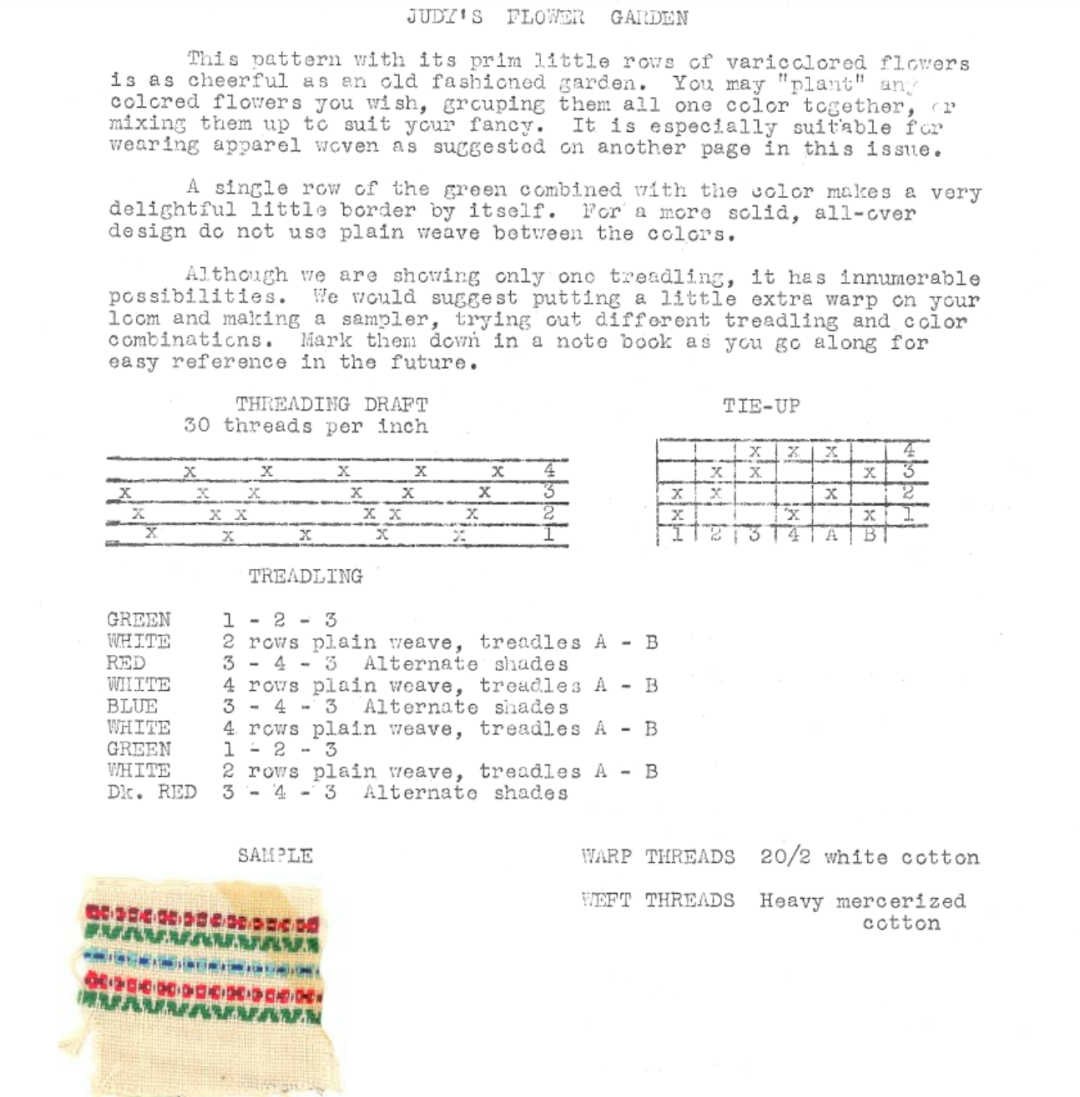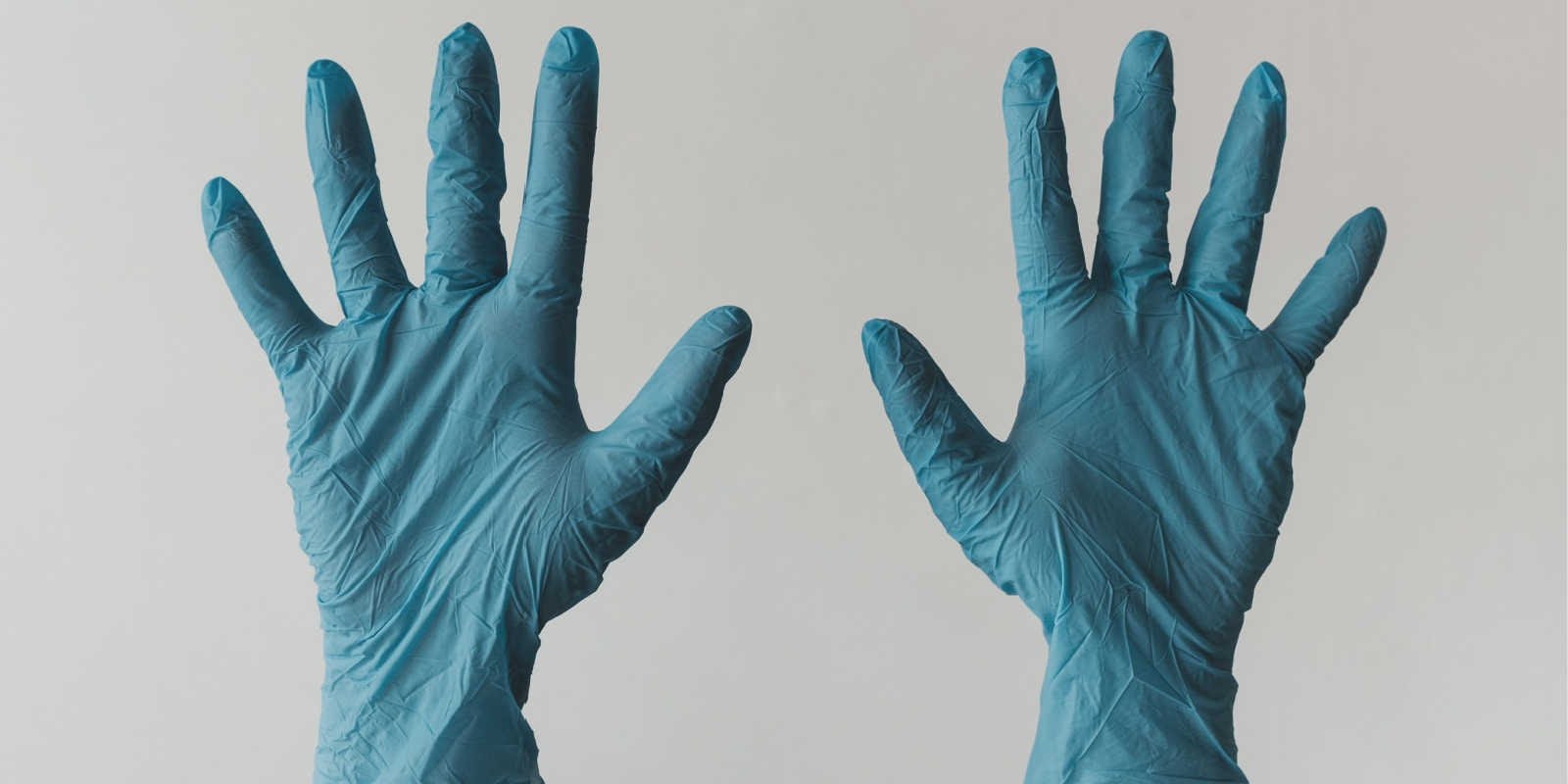Recently a librarian at a weavers’ guild emailed me to ask for help preserving a number of weaving samples. The samples are the kind many of us weavers are familiar with: Small bits of woven cloth affixed to a sheet of loose-leaf paper that lists pertinent weaving information. The guild has a collection that goes back decades, and the librarian wanted to know how to keep these samples safe and useful.

An example of a weaving information page with attached sample. This particular sample is from the Volume 1, No. 11 of the newsletter Warp and Weft. Photo courtesy of the On-Line Digital Archive of Documents on Weaving and Related Topics
Approach
When approaching this sort of conservation problem, I think first about how the samples will be used: weavers will want to view the cloth (sometimes both sides) and perhaps even handle the samples to check drape. The informational paper is extraordinarily important as it gives context to the woven sample, so the two should be stored together.
Next, I think about possible problems to nip in the bud with whatever storage solution I might recommend. The most obvious is the handling of the cloth. You might not realize it, but your hands (no matter how clean they are) deposit oil on everything you touch. Over time these oils build up and discolor and degrade cloth. Paper—especially older paper—can damage cloth. Most paper is acidic in some way and will off-gas. Storing cloth directly affixed to paper means the paper will be off-gassing directly onto these bits of fabric. Finally, the solution should be easy and inexpensive.
Recommendations
First and foremost, a rule should be put in place that anyone who wants to handle these samples directly needs to wear a fresh pair of disposable gloves. These gloves will prevent oils on the hands from migrating to the fabric. This would allow weavers to check for drape without directly touching the cloth.
Next, I’d recommend removing the fabric sample from the paper whenever possible and placing fabric samples into small, boPET (a polyester film; the best known trade names are Mylar, Melinex, and Hostaphan) photo sleeves or bags. BoPET is an archival material that will protect the cloth from outside elements. It’s also see-through, so weavers who don’t need to handle the cloth for drape can leave the sample in the bag and view the cloth easily from either side. As an added benefit, these bags/sleeves are very reasonably priced—just make certain to confirm you’re getting actual boPET as some product descriptions I’m seeing online are sketchy at best. Typically scrapbooking, photography, and archival companies should have what you’re looking for, but if you’re uncertain, ask before buying.
If it’s not possible to remove the fabric sample from the paper without causing potential damage (say, a glue was used), do not attempt to wash away the glue or to scrape it off. Leave it be and put the whole sheet with attached sample in a boPET sleeve. It’s better for the cloth to remain on the paper than to potentially damage it in any way. The same goes for any antique samples where it might be best to leave the sample and paper together for historical purposes (think Shuttlecraft Guild samples).
If you can separate the sample and the informational sheet, the latter can also go into a separate sleeve for an added layer of protection. Unless there’s a reason to preserve the paper itself, boPET does not need to be used. Then the sample sleeve can be paper clipped on to the sleeve with the informational sheet or, if the sample is placed in a sealed boPET bag, it can go directly in the same sleeve. Once packaged, the papers and their samples can be stored somewhere they’ll stay dry and out of direct sunlight—binders would work just fine, for example.
(It's worth noting that bound books or notebooks that house samples collections are another story, and I would not remove samples in these cases. Books would need to be evaulated on a case-by-case basis to determine the level of protection needed and a conservator, archivst, special collections librarian, or museum collections specialist would probably have more insight and better advice than I.)
Personally I would also make color photocopies of all the informational sheets with samples attached to keep in a separate binder or filing system. This way, if a sample happens to get loose, there’s an easy way to match the sample to the sheet. Also, if an informational sheet gets damaged, you’ll have backups.
Finally, if a library has a fairly large collection of samples, I recommend coming up with a preservation schedule. Don’t feel like you need to repackage your entire collection; focus on the oldest and most brittle first. The rest can be repackaged over the course of a year or even years. Do what makes sense for your weaving collection and budget.
Happy Weaving!
Christina

